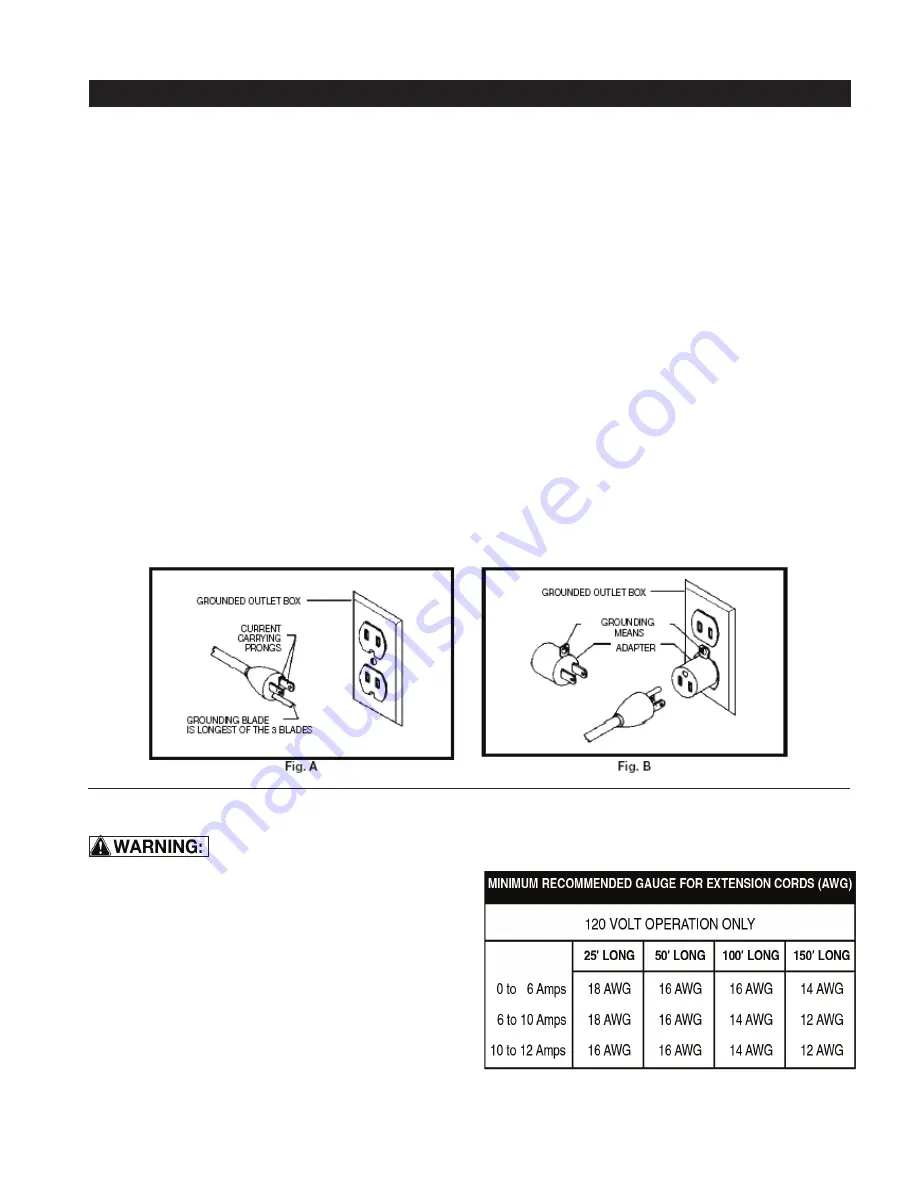
EXTENSION CORDS
Keep the extension cord clear of the working area. Position the cord so that it will not get
caught on lumber, tools or other obstructions while you
are working with a power tool. Check extension cords
before each use. If damaged replace immediately.
Never use a tool with a damaged cord, since touching
the damaged area could cause electrical shock, resulting
in serious injury.
Use a proper extension cord. Only use cords listed by Under-
writers Laboratories (UL). Other extension cords can cause a
drop in line voltage, resulting in a loss of power and over-
heating of tool. When operating a power tool outdoors, use an
outdoor extension cord marked “W-A” or “W”. These cords are
rated for outdoor use and reduce the risk of electric shock.
17
In the event of a malfunction or breakdown, grounding provides a path of least resistance for electric current
to reduce the risk of electric shock. This tool is equipped with an electric cord having an equipment-grounding
conductor and a grounding plug. The plug must be plugged into a matching outlet that is properly installed and
grounded in accordance with all local codes and ordinances. Do not modify the plug provided. If it will not fi t the
outlet, have the proper outlet installed by a qualifi ed electrician.
Improper connection of the equipment-grounding conductor can result in a risk of electric shock. The conductor,
with insulation having an outer surface that is green with or without yellow stripes, is the equipment-grounding
conductor. If repair or replacement of the electric cord or plug is necessary, do not connect the equipment-grounding
conductor to a live terminal. Check with a qualifi ed electrician or service personnel if the grounding instructions are
not completely understood, or if in doubt as to whether the tool is properly grounded.
Use only three wire extension cords that have three-prong grounding plugs and three-pole receptacles that accept
the tool’s plug.* Repair or replace a damaged or worn cord immediately.
This tool is intended for use on a circuit that has an outlet that looks the one illustrated in Figure A below. The tool
has a grounding plug that looks like the grounding plug as illustrated in Figure A below. A temporary adapter, which
locks like the adapter as illustrated in Figure B below, may be used to connect this plug to a two-pole receptacle, as
shown in Figure B if a properly grounded outlet is not available.** The temporary adapter should only be used until
a properly grounded outlet can be installed by a qualifi ed electrician. The green colored rigid ear or tab, extending
from the adapter, must be connected to a permanent ground such as a properly grounded outlet box.
* Canadian electrical codes require extension cords to be certifi ed SJT type or better.
** Use of an adapter in Canada is not acceptable.
ELECTRICAL REQUIREMENTS








































